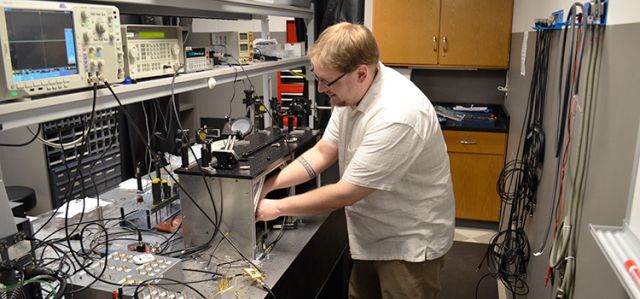Document Type
Article
Publication Date
11-1995
Publication Source
Optical Engineering
Abstract
The ability of a ladar system to resolve two or more separate returns from a combined echo is related to the effective correlation bandwidth of the pulse emitted by the ladar system. Phase modulation of an outgoing pulse introduces additional frequency components, which increases the effective correlation bandwidth of the pulse and thus improves the range resolution of the system. In this paper, we discuss the general theoretical basis for achieving improved range resolution using a modulated waveform and a matched filter receiver. We then demonstrate these concepts by considering the particular case of improved range resolution for a sinusoidally phase modulated carrier with a rectangular amplitude function. We also perform computer simulations with a realistic pulsed ladar envelope possessing the same modulation function. Our calculations indicate that the resolution of a pulsed ladar system may be improved by a factor of 70 with a phase-modulated pulse and a matched-filter receiver.
Inclusive pages
3115-3121
ISBN/ISSN
0091-3286
Document Version
Published Version
Copyright
Copyright © 1995, Society of Photo Optical Instrumentation Engineers
Publisher
Society of Photo Optical Instrumentation Engineers
Volume
34
Issue
11
Peer Reviewed
yes
Keywords
optical remote sensing, image processing, ladar, phase modulation, laser radar, pulse compression, matched filtering, ambiguity function, range resolution
eCommons Citation
Masters, Leonard T.; Mark, Martin B.; and Duncan, Bradley D., "Analysis of Ladar Range Resolution Enhancement by Sinusoidal Phase Modulation" (1995). Electro-Optics and Photonics Faculty Publications. 11.
https://ecommons.udayton.edu/eop_fac_pub/11




Comments
Paper is made available for download in compliance with publisher policies on self-archiving and with author permission. Permission documentation is on file.
One print or electronic copy may be made for personal use only. Systematic reproduction and distribution, duplication of any material in this paper for a fee or for commercial purposes, or modification of the content of the paper are prohibited.